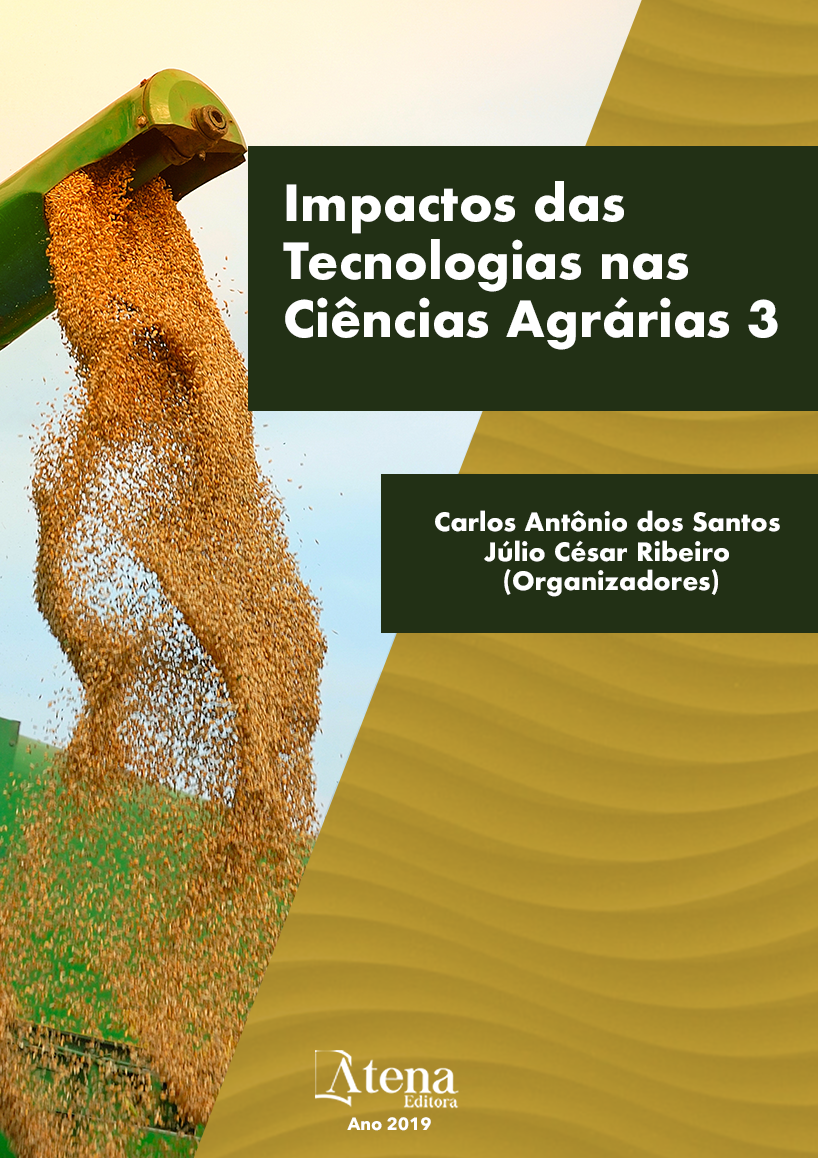
EFEITO DO USO DO MULCHING PLÁSTICO NA CULTURA DO CAFEEIRO IRRIGADO
Este trabalho teve como objetivo
analisar o desenvolvimento de quatro variedades
de café irrigado, com a utilização de mulching
plástico no município de Itumbiara-GO. O
presente trabalho está instalado, em condições
de campo, na Fazenda Experimental do Instituto
Luterano de Ensino Superior de Itumbiara,
localizada no município de Itumbiara-GO.
Foram utilizadas mudas de cafeeiro da espécie
arábica (Coffea arabica L.) das cultivares
Catuai Vermelho IAC 144, Catuai Amarelo
IAC 62, Tupi IAC 1669-33 e Topázio MG 1190,
plantadas no dia 15/03/17 no espaçamento de
3,5 m entre linhas por 0,70 m entre plantas. O
delineamento experimental empregado foi de
blocos casualizados em esquema fatorial 4 x
2, sendo 4 cultivares (144, 62, tupi e topázio)
e dois tipos de cobertura de solo (com e sem
mulching plástico) com quatro repetições. O
desenvolvimento vegetativo do cafeeiro foi
avaliado 8 meses após o plantio (15/11/17). As
características vegetativas altura de plantas
(cm) e diâmetro de caule (mm). Conclui-se que
a utilização da cobertura plástica (mulching)
não trouxe nenhuma diferença para a cultura
do Café arábica (Coffea arábica L.), contudo a
utilização da cobertura traz benefícios, como
uma redução na utilização de água, menor
competição de plantas daninhas, economia com
herbicida. E quanto as variedades, as mesmas
apresentaram diferenças, as variedades 144 e
topázio foram as que se adaptaram melhor a
região.
EFEITO DO USO DO MULCHING PLÁSTICO NA CULTURA DO CAFEEIRO IRRIGADO
-
DOI: 10.22533/at.ed.6141930094
-
Palavras-chave: Cobertura de solo, variedades de café, café arábica
-
Keywords: Soil cover, coffee varieties, Arabica coffee.
-
Abstract:
This work aims to analyze the development of four varieties of irrigated
coffee using plastic mulching in the municipality of Itumbiara-GO. The present work
is installed, under field conditions, in the Experimental Farm of the Lutheran Institute
of Higher Education of Itumbiara, located in the municipality of Itumbiara-GO. Coffee
seedlings of the Arabica species (Coffea arabica L.) of the cultivars Catuai Vermelho
IAC 144, Catuai Amarelo IAC 62, Tupi IAC 1669-33 and Topázio MG 1190 were planted
on 03/15/17 in the spacing of 3.5 m between rows by 0.70 m between plants. The
experimental design was a randomized block design in a 4 x 2 factorial scheme, four
cultivars (144, 62, tupi and topázio) and two types of soil cover (with and without plastic
mulching) with four replications. The vegetative development of coffee was evaluated
8 months after planting (11/15/17). The vegetative characteristics height of plants (cm)
and diameter of stem (mm). It is concluded that the use of the mulching did not make
any difference to the cultivation of the Arabica coffee (Coffea arabica L.), however the
use of the cover brings benefits, such as a reduction in the use of water, less competition
of weeds, economy with herbicide. As for the varieties, they showed differences, the
varieties 144 and topázio were the ones that adapted better to the region.
-
Número de páginas: 15
- João Antônio da Silva
- Geovany Caldas Ramos
- Aldaisa Martins da Silva de Oliveira
- Luiza Faria Gobbi
- Daniela Araújo Cunha
- Raul de Moraes Pinto
- Ricardo Alexandre Lambert


